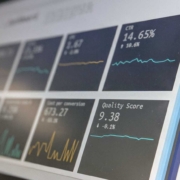The myths of performance management
Myths often arise quickly. People talk after each other and if enough people say it, ideas suddenly become facts. This is no different in business.
This is how views suddenly become conventional truths. As Galileo was allowed to experience when he actually showed that the Earth revolved around the Sun. And that Earth was anything but the center of the universe. The necessary myths have also arisen within Performance management, or in that capacity any type of business.
Negative working capital is healthy.
Some companies have made it their strategy. Quickly collect the invoices from their customers and slow payment from their suppliers. So suppliers finance the company. This is not a stable strategy in the longer term.
Over time, the suppliers realize that they have to incur extra costs and will pass on those extra costs in their price. So in the end you only pay, the costs are hidden. In addition, a supplier is less likely to treat your wishes and requirements as a top priority. The chance that you are a preferred Customer in their eyes is decreasing day by day. The supplier will also be less inclined to move with you or to think along if you experience problems further down the chain. Also, they will not quickly send their best people if there are technical problems with the product. In short, you become a 2nd rank customer for them. This ultimately has negative consequences for your Operational Income and your competitiveness in the market. The Work relationship onderzoek survey published last year underlines that.
Performance measurements are for monitoring and control.
Performance measurements play a crucial role in business and increasingly in public organizations. Many managers consider it a thermostat. Feel how the organization is doing. If it is below the desired standard, things are going badly and measures are being taken in the form of a stricter policy or even reorganization. If it is above the norm, we will hand out rewards. In this way we try to keep the organization on the path.
For several reasons, the above is incorrect and even dangerous for the continuity of the organization. First, performance measurements are a means of communication. It translates higher strategic goals into clear tasks and actions to be performed. It tells what is important but even more what apparently is not important.
The other problem is what we don’t measure and therefore don’t know. Performance measurements all too often lead to tunnel vision. People stare blindly at productivity or machine output, but forget to look at other circumstances such as motivation or even quality. You will not benefit from very high productivity if your customers are not satisfied.
Another point is that performance measurements mainly say something about the past, but little or nothing about the future. You cannot change the past. No matter how many analyzes you do. So if you take action based on the past, you risk doing the wrong thing. The manager’s question must therefore be continuous whether the current status quo is sufficient to meet the wishes and requirements of tomorrow.
Best practices lead to better performance.
The argument seems obvious. If we strive for the same performance as our competitor, we improve ourselves. That reasoning goes wrong when you consider that companies perform differently because they distinguish themselves. Where for one company differentiation is the key strategy, for you price strategy is the driving strategy.
It also underestimates the fact that strategies pursued are a complex coherence of many factors. From business strategy, culture, operational strategies, network design, geographical factors, etc. These elements are not reflected in benchmarks or best practices. The fact that you use the same golf clubs as Jordan does not mean that you can play golf just as well.
Finally, best practices show how the performance is, but do not show why this is the case. And understanding the why is often much more important than the performance itself. It means you understand why you don’t score the same performance, or on other metrices, better than your competitor. That is why Unilever looked at Proctor & Gamble’s sustainability strategy, but subsequently developed a unique, distinctive own strategy. Which is still extremely successful.
Employees automatically accept the better working method.
How hard can it be. Show employees that the other working method is faster and better and they automatically adopt that method. If you think that with an existing, effective method, they just accept the benefits of the new method, you will be disappointed. The following reactions are often encountered:
- They nod yes, but then they do the work in the old way
People listen selectively. Cherry picking in the new method then takes place
Paranalytics. selective analyzes are used to show that the current method can do the same as the new one.
If you really want change, you will have to demonstrate that the current working method is inadequate. This is usually clear in the event of imminent bankruptcy. Then the sheep quickly jump over the dam. You can also reduce the distance between your customer and employees so that the employee can see what problems he is causing.
You should also not be afraid to sideline key figures in the organization who frustrate the change. If you are afraid of this, they will effectively frustrate any change via the corridors. Also keep in mind that people must effectively implement the new working method for at least 3 months before they regard it as a new routine and thus stick to it. Organizational change takes time and a lot of effort in the form of training and guidance in the workplace.
Avoid your own myths.
The above are just a few well-known myths. More importantly, you uncover and debunk the myths in your own company. The only way to do that is to ask questions every time. Not just accepting things but staying critical. Whether it concerns processes, procedures, service levels or even whether you serve the right customers.
So my question to you: What is your biggest myth?







